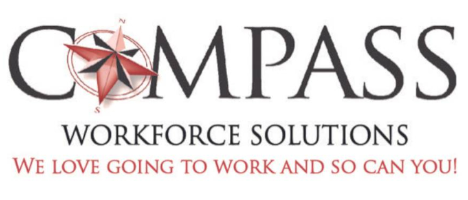
The war for talent has evolved into a retention battle, with Gallup reporting that replacing an employee costs one-half to two times their annual salary. For businesses already struggling with tight margins and fierce competition, losing key employees can mean the difference between growth and stagnation. At Compass Workforce Solutions, we’ve helped countless organizations implement employee retention strategies that transform revolving-door cultures into stable, thriving workplaces where top performers choose to build their careers. How can these strategies help you?
Understanding Why Employees Really Leave
Exit interviews often reveal surface-level reasons for departure: better salary, shorter commute, or new opportunities. However, deeper investigation uncovers fundamental disconnects between what employees need and what organizations provide.
Beyond Compensation Issues
While compensation matters, it rarely stands alone as the primary reason employees leave. MIT Sloan research found that a toxic culture is 10.4 times more powerful than compensation in predicting turnover. Employees tolerate below-market pay when they feel valued, challenged, and connected to meaningful work. Conversely, generous salaries cannot compensate for poor management, limited growth opportunities, or toxic work environments.
Here are the top non-monetary reasons employees leave:
- Limited career advancement opportunities: Employees see no path forward within the organization
- Poor relationship with direct manager: Lack of support, recognition, or respect from leadership
- Absence of meaningful work: Feeling disconnected from organizational purpose or impact
- Inflexible work arrangements: Inability to balance professional and personal responsibilities
- Lack of recognition and appreciation: Contributions go unnoticed or undervalued
The Manager-Employee Relationship Factor
The adage “people don’t leave companies, they leave managers” contains a profound truth. Gallup research indicates that managers account for 70% of the variance in employee engagement, making the manager-employee relationship the single most influential factor in retention. Poor managers create disengaged teams where turnover becomes contagious, while excellent managers build loyal teams that resist even attractive external opportunities.
Communication breakdowns between managers and employees create fertile ground for turnover. When employees feel unheard, uninformed, or misunderstood, they begin searching for environments where their voices matter. Managers who fail to provide regular feedback, clear expectations, or development support essentially push employees toward exits. Trust and respect form the foundation of retention; without them, no amount of perks or programs will keep employees engaged.
Core Employee Retention Strategies That Drive Results
Effective employee retention strategies address multiple dimensions of the employee experience, creating environments where people want to stay and grow. Comprehensive HR strategies recognize that retention requires systematic approaches rather than isolated initiatives.
Career Development Pathways
Employees who see clear paths for advancement rarely search for external opportunities. Yet many organizations, particularly smaller ones, struggle to provide traditional vertical progression. The solution lies in reimagining career development beyond promotions, creating multiple avenues for growth and advancement.
Development opportunities that retain top talent include:
- Stretch assignments pushing employees beyond current capabilities
- Mentorship programs connecting junior and senior employees for knowledge transfer
- Educational assistance supporting degrees, certifications, and continuous learning
- Conference attendance providing exposure to industry trends and networks
- Internal internships allowing employees to explore different departments
- Leadership shadowing preparing high-potentials for advancement
- Innovation projects engaging creative problem-solving abilities
Recognition and Reward Systems
Recognition costs nothing yet delivers extraordinary returns. Employees who feel appreciated demonstrate higher engagement, productivity, and loyalty. Yet many organizations fail to recognize contributions, leaving employees feeling invisible and undervalued systematically. Effective recognition programs combine formal and informal elements, creating cultures where appreciation becomes embedded in daily operations.
Effective recognition methods that drive retention include:
- Peer-to-peer recognition platforms enabling colleagues to appreciate each other
- Spot bonuses for exceptional performance or effort beyond normal expectations
- Public appreciation during team meetings or company-wide communications
- Personalized rewards tailored to individual preferences and motivations
- Career milestone celebrations acknowledging tenure and achievement anniversaries
Work-Life Integration Support
The pandemic permanently altered employee expectations around work-life balance. Remote work possibilities, flexible schedules, and results-focused management have become retention necessities rather than luxuries. Organizations clinging to rigid, presence-based management models hemorrhage talent to more flexible competitors.
Work-life integration goes beyond simple flexibility; it acknowledges that employees have full lives outside work, requiring attention and energy. Preventing employee burnout requires understanding individual needs and constraints. Parents need different support than caregivers for elderly relatives; early-career employees have different priorities than those nearing retirement.
Creating Your Retention Action Plan
Developing effective retention strategies requires systematic assessment, planning, and execution. Our retention-focused approach emphasizes data-driven decisions combined with genuine employee engagement.
Conducting Stay Interviews
While exit interviews reveal why employees leave, stay interviews uncover why they remain and what might cause them to leave. These proactive conversations identify retention risks before they materialize, enabling preventive action rather than reactive scrambling. Stay interviews demonstrate that organizations value current employees as much as they court potential hires.
Effective stay interviews follow structured frameworks while maintaining conversational tones. Questions explore satisfaction with current roles, relationships with managers and colleagues, career aspirations, and potential sources of frustration. The key lies in creating psychological safety where employees share honestly without fear of retribution. Managers must listen actively, take concerns seriously, and follow through on commitments made during conversations.
Stay interview questions should explore what employees love about their roles, what frustrates them daily, what would tempt them to leave, and what would make them stay long-term. These conversations often reveal simple fixes: outdated equipment hampering productivity, unclear expectations causing stress, or missed recognition opportunities dampening motivation. Addressing these issues costs little while demonstrating responsiveness that builds loyalty.
Building Manager Capabilities
Since managers drive retention more than any other factor, developing their capabilities becomes essential for organizational stability. Many managers receive promotions based on technical skills rather than leadership abilities, leaving them ill-equipped to inspire, develop, and retain talent. Professional development programs bridge these gaps, transforming competent individual contributors into retention-focused leaders.
Essential manager competencies for retention include:
- Empathetic leadership understanding and responding to employee needs
- Clear communication providing transparency and setting expectations
- Delegation skills empowering employees while maintaining accountability
- Conflict resolution addressing disagreements before they fester
- Performance coaching developing talent rather than just evaluating it
- Recognition habits regularly appreciating contributions
- Flexibility adapting management style to individual needs
Measuring and Tracking Success
Retention strategies without measurement remain wishes rather than plans. Organizations must establish baseline metrics, track progress consistently, and adjust strategies based on results. Expert HR consultation helps identify meaningful metrics aligned with business objectives.
Key retention metrics extend beyond simple turnover rates. Regrettable turnover, where high performers leave, matters more than overall turnover. Tenure distribution reveals whether turnover concentrates in specific periods, suggesting onboarding or advancement issues. Department and manager-specific turnover identifies problem areas requiring targeted intervention.
Predictive indicators help organizations identify retention risks before departures occur. Engagement survey scores correlate strongly with turnover intentions. Absenteeism patterns often precede resignations. Internal mobility rates indicate whether employees see advancement opportunities. Tracking these indicators enables proactive intervention when risks emerge.
Culture as the Foundation of Retention
Organizational culture ultimately determines whether retention strategies succeed or fail. The strongest programs cannot overcome toxic cultures where employees feel undervalued, disrespected, or disconnected from organizational purpose.
Defining and Living Your Values
Values statements adorning office walls mean nothing without consistent demonstration through actions and decisions. Employees quickly recognize hypocrisy when organizations proclaim values they don’t practice. Authentic cultures where stated values align with daily experiences create powerful retention forces that transcend individual programs or benefits.
Value alignment begins with an honest assessment of actual versus aspirational culture. What behaviors get rewarded? Which violations get ignored? How do leaders act under pressure? These realities, not written statements, define true organizational values. Employee support services help employees navigate cultures while organizations work toward alignment.
Building Community and Connection
Humans crave belonging, and workplaces that foster genuine community create powerful retention advantages. When employees form meaningful relationships with colleagues, leaving means severing social bonds, not just changing jobs. Organizations that facilitate connection through team building, cross-functional collaboration, and social activities build retention through relationships.
Remote and hybrid work models challenge traditional community building, but don’t eliminate possibilities. Virtual coffee chats, online team games, and digital collaboration spaces maintain connection across distances. Occasional in-person gatherings become more meaningful when they’re special rather than routine. The key lies in intentional facilitation rather than hoping that a connection happens naturally.
Start Building Your Retention Strategy Now
The truth is that effective retention strategies don’t require massive budgets or complex programs. They require genuine commitment to understanding and addressing employee needs. Small improvements in management quality, recognition frequency, or development opportunities can dramatically impact retention. Compensation planning expertise ensures your total rewards strategy supports rather than undermines retention efforts.
When employees feel invested in, supported, and valued, they reciprocate with loyalty, engagement, and performance that drives organizational success. Get retention support today to begin building the comprehensive retention strategy your organization needs.








